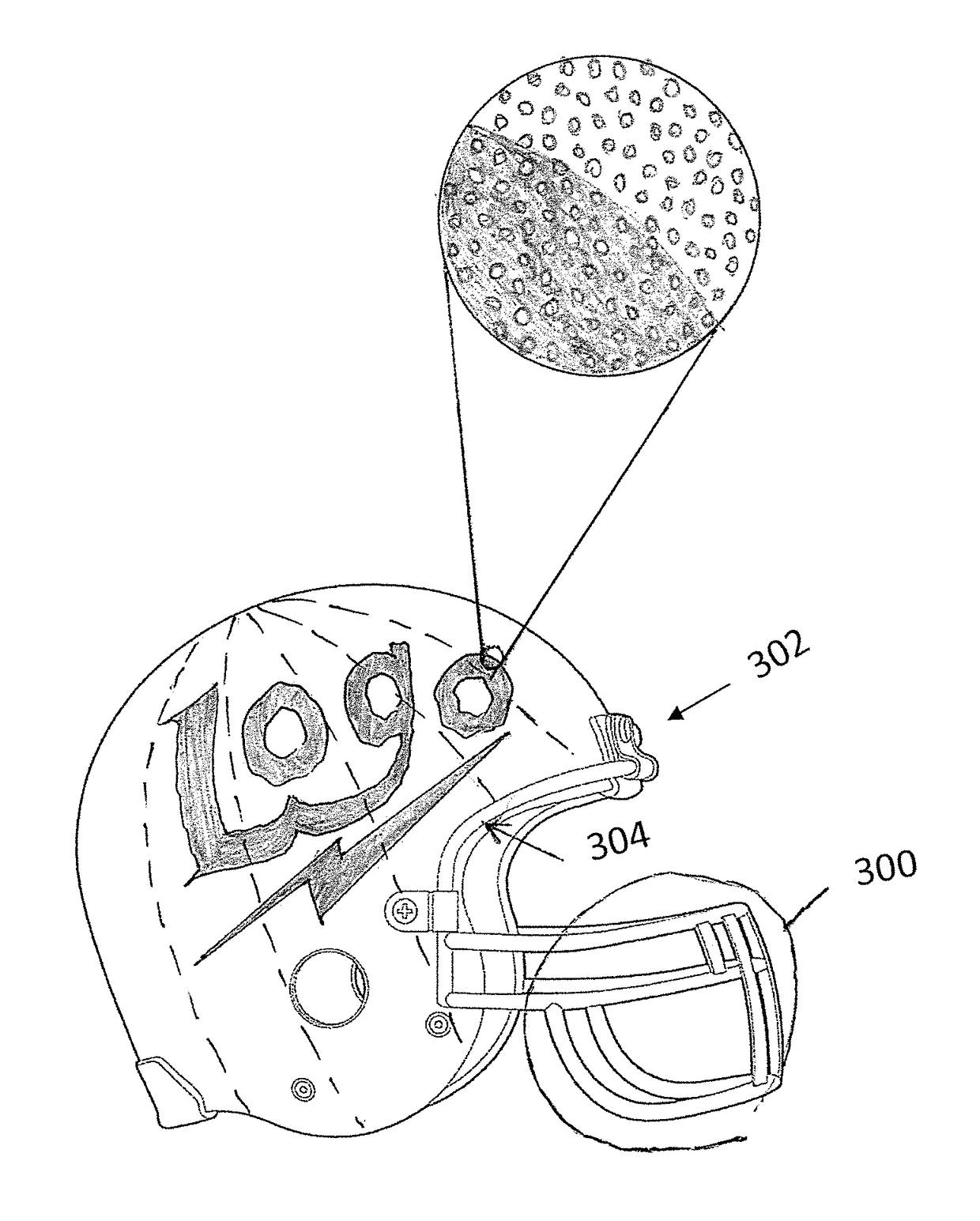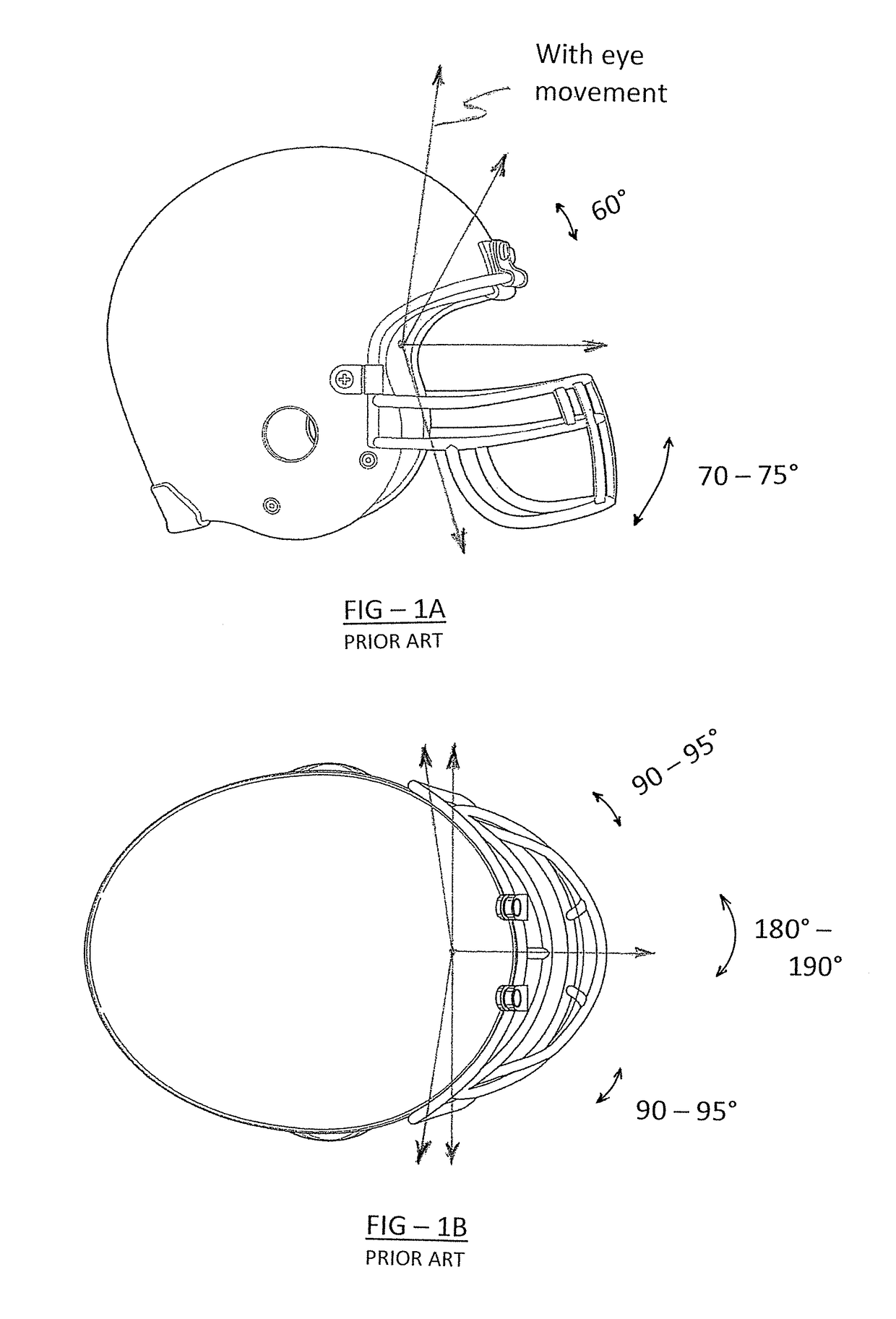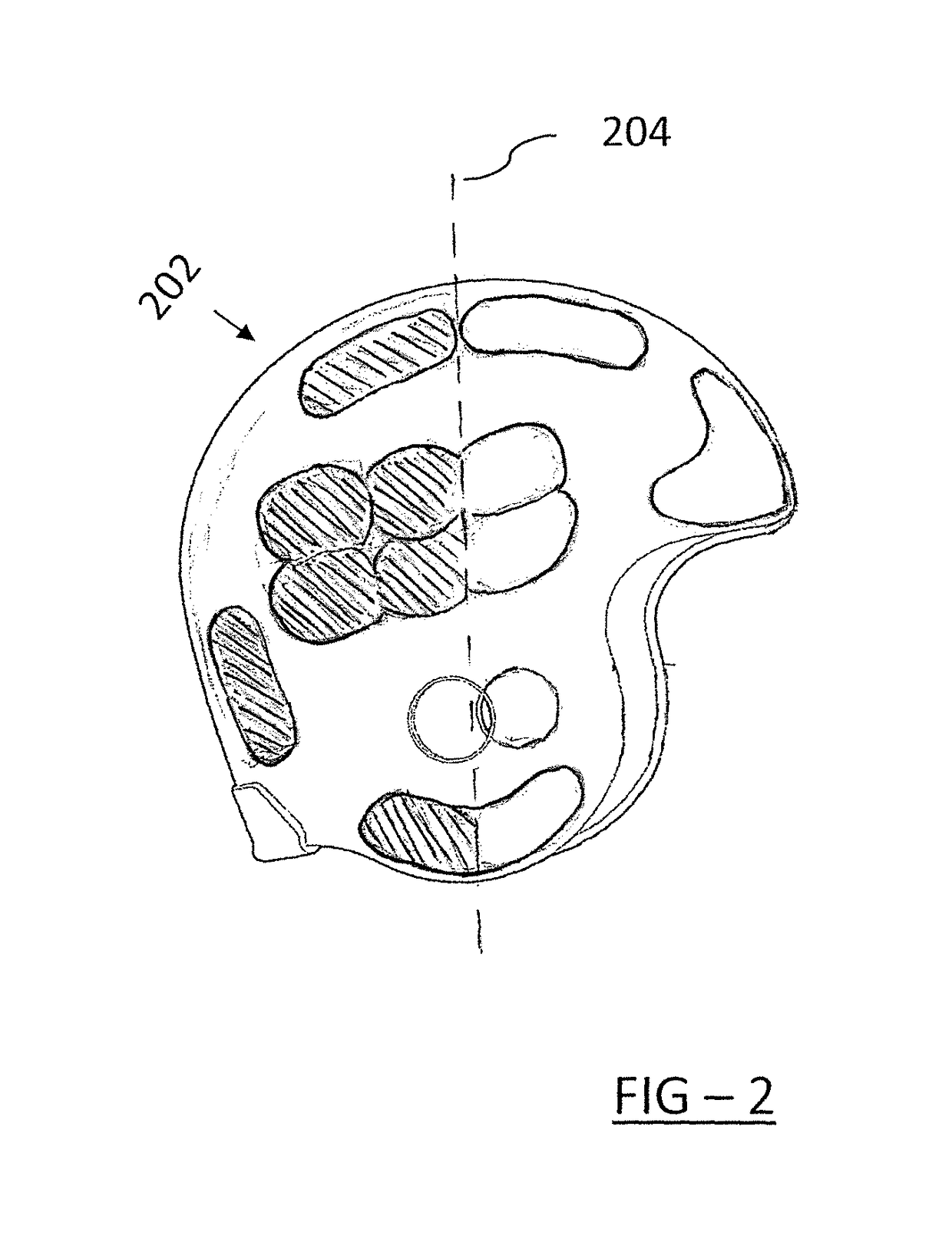Optimized visual field helmets
a visual field and helmet technology, applied in the field of protective helmets, can solve the problems of oblique/tangential peripheral field of view, limited function of existing designs, and design marked restriction of user's visual field, and achieve the effect of improving the peripheral visual field
- Summary
- Abstract
- Description
- Claims
- Application Information
AI Technical Summary
Benefits of technology
Problems solved by technology
Method used
Image
Examples
example 1
[0025]The shell of the helmet is made of an optically clear polycarbonate. A thin / sparse reflective coating is placed uniformly over the shell to achieve a half-silvered surface. This coating is typically made of aluminum metalizer. The reflective coating achieves a one-way mirror effect reflecting light from the external side, while remaining clear on the inside. A scratch resistant paint such as acrylic or metallic can be used over the reflective surface to achieve numerous color tints. A protective scratch resistant film such as diamond-like carbon and polycrystalline diamond is placed over the shell. Transparent silicone plastic is used for the foam padding.
example 2
[0026]The shell of the helmet is made of an optically clear polycarbonate. The transparent and light transmitting coatings are applied as a one-way viewing film to the shell, creating an exposed image or color externally, while transmitting light to the viewer. These films use a microdot pattern. Transparent silicone plastic is used for the foam padding.
example 3
[0027]The shell of the helmet is made of an optically clear polycarbonate. Various thicknesses of SiO2 and Nb are used for light absorbing and transparent coatings, thereby achieving a blue external color. A SiO2 coating is deposited as a final, scratch-resistance layer. Transparent silicone plastic is used for the foam padding.
[0028]In summary, the improvement in visual field made possible by the invention should increase both functionality and safety. FIG. 5 depicts improvements in the visual field compared to the prior art made possible by the invention. Curved line 502 represents the visual field allowable by a prior-art helmet. Curve 504 illustrates the visual field made possible by the invention.
[0029]When used by athletes, helmets according to the invention enhance the wearer's ability to visualize and assess their surroundings to improve their safety. The invention also adds to, and enhances, the ability and performance of the game participants by offering better visualizati...
PUM
 Login to View More
Login to View More Abstract
Description
Claims
Application Information
 Login to View More
Login to View More - R&D
- Intellectual Property
- Life Sciences
- Materials
- Tech Scout
- Unparalleled Data Quality
- Higher Quality Content
- 60% Fewer Hallucinations
Browse by: Latest US Patents, China's latest patents, Technical Efficacy Thesaurus, Application Domain, Technology Topic, Popular Technical Reports.
© 2025 PatSnap. All rights reserved.Legal|Privacy policy|Modern Slavery Act Transparency Statement|Sitemap|About US| Contact US: help@patsnap.com



